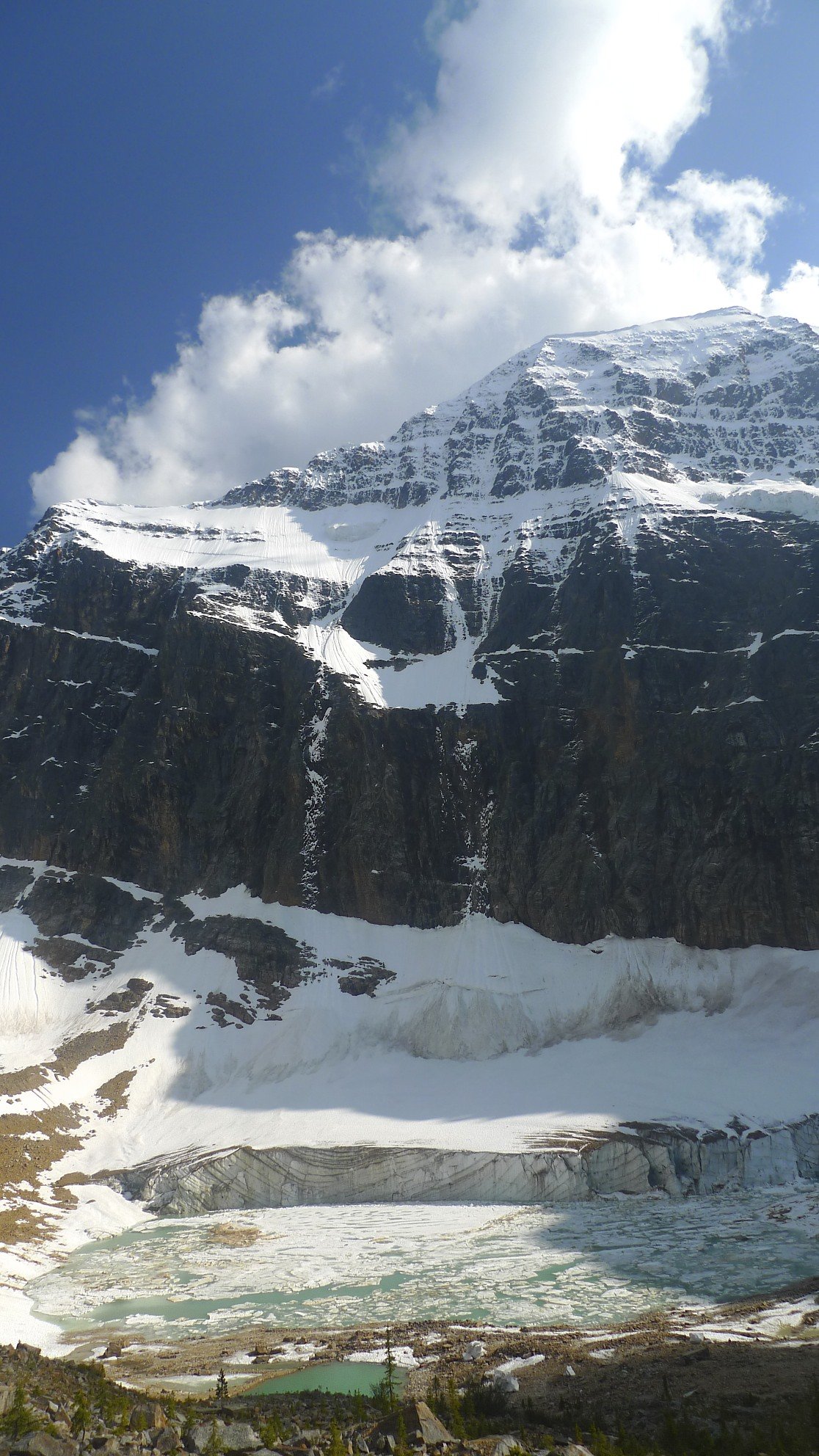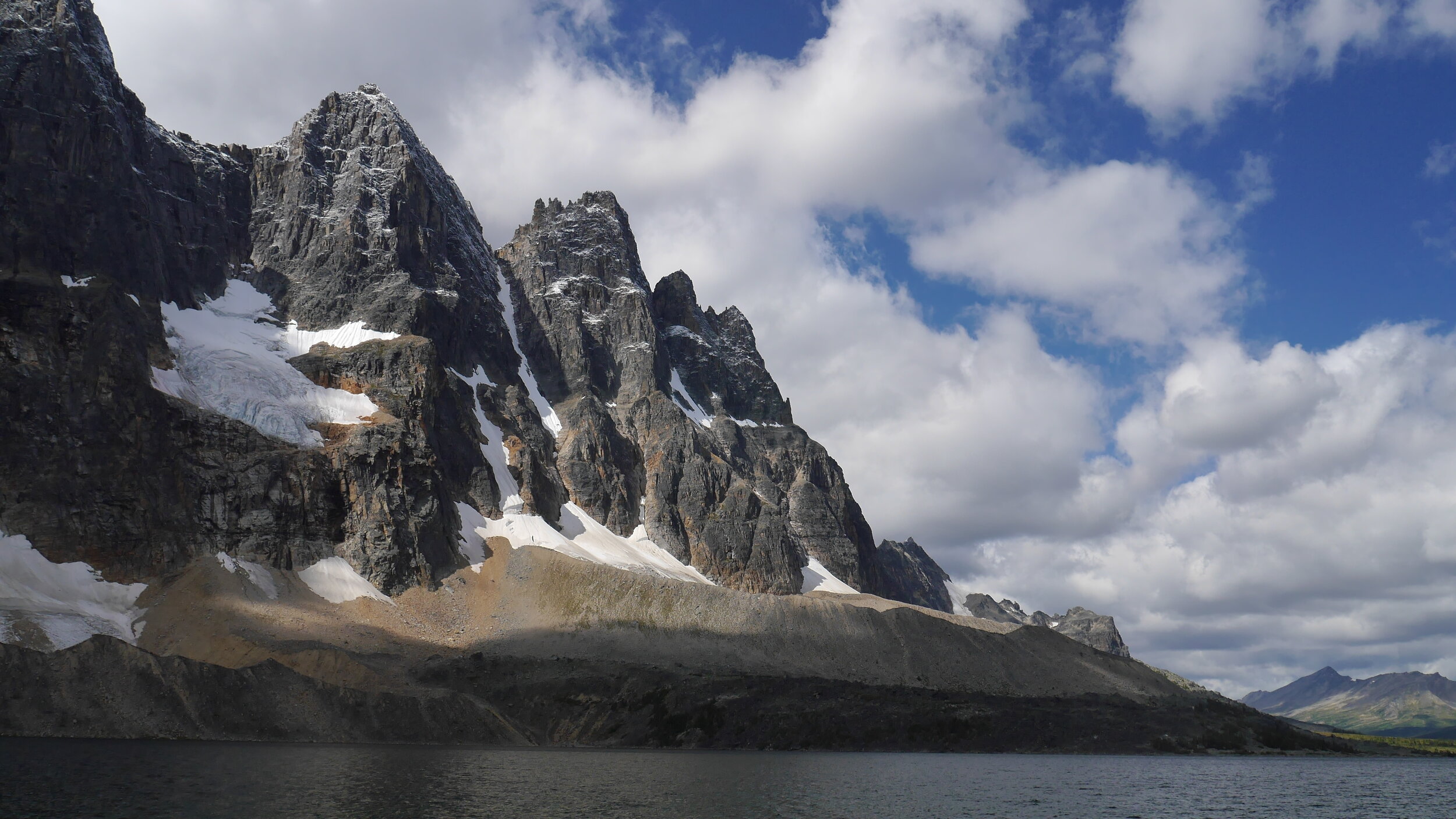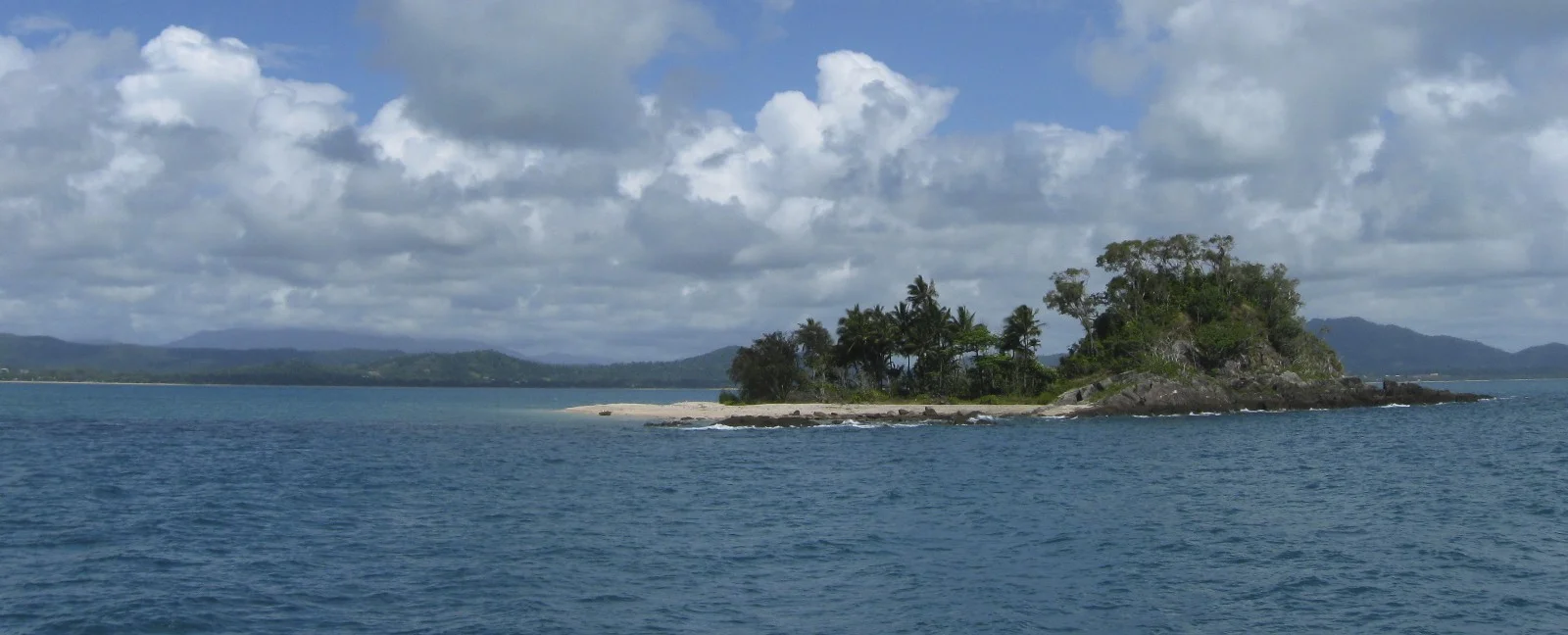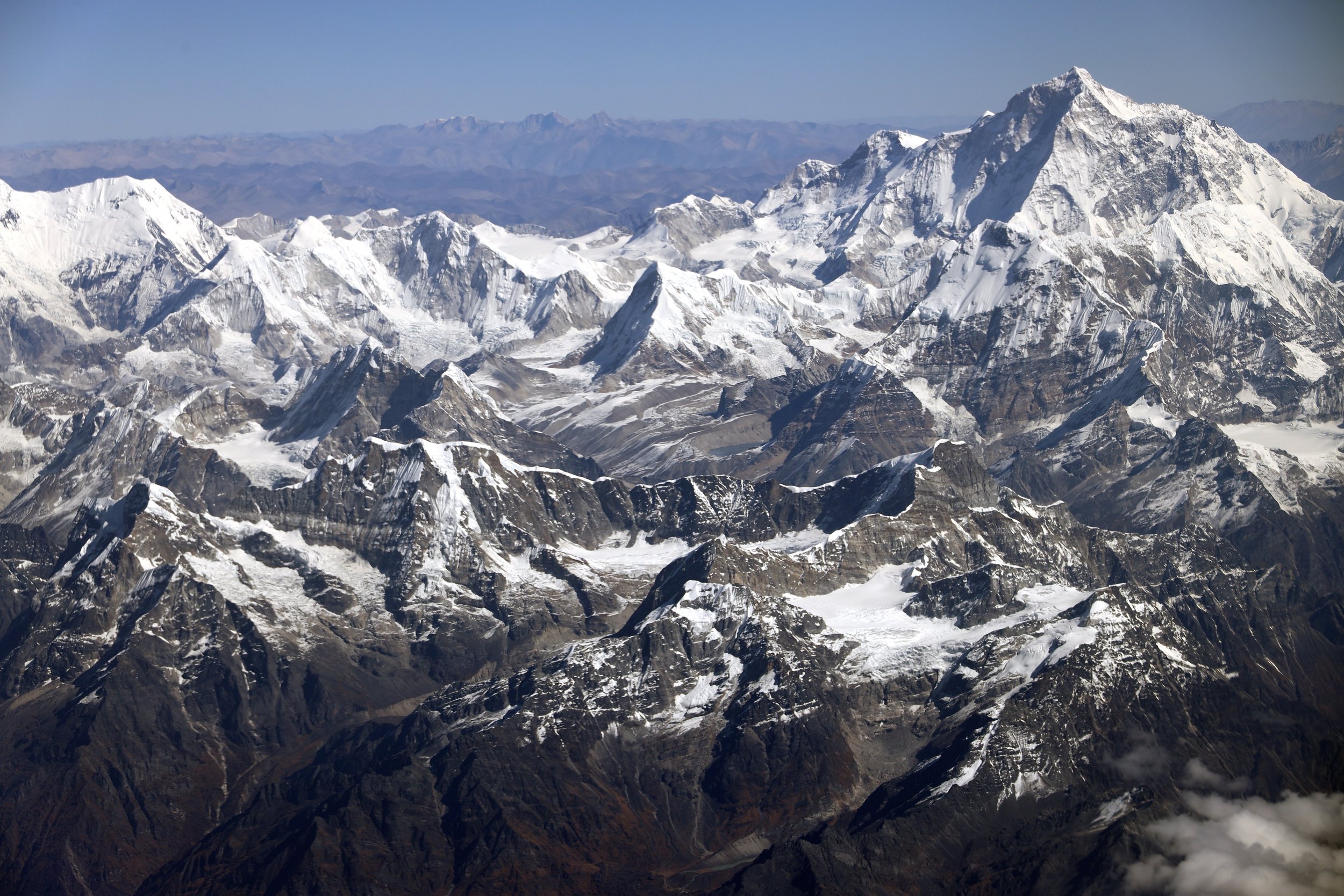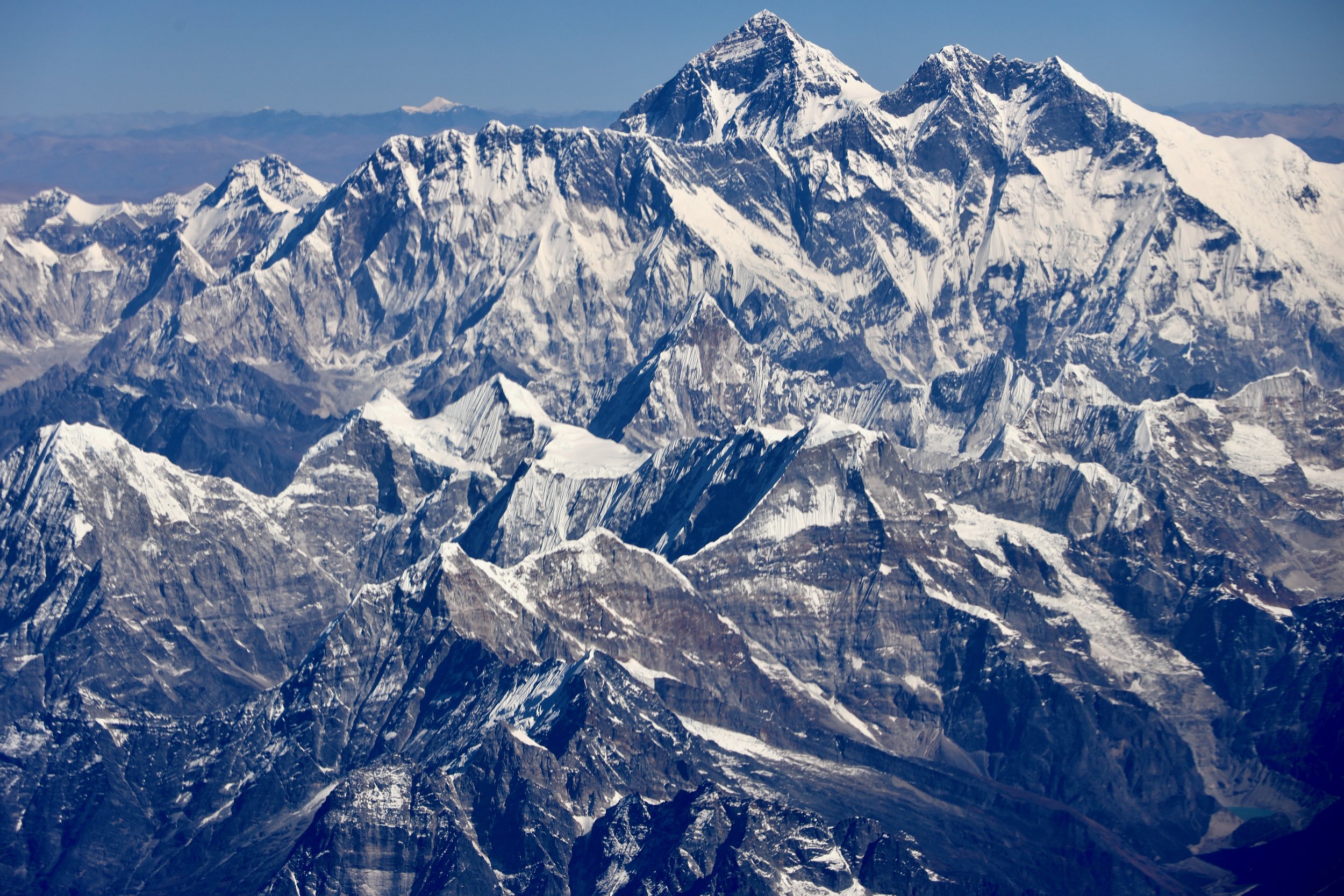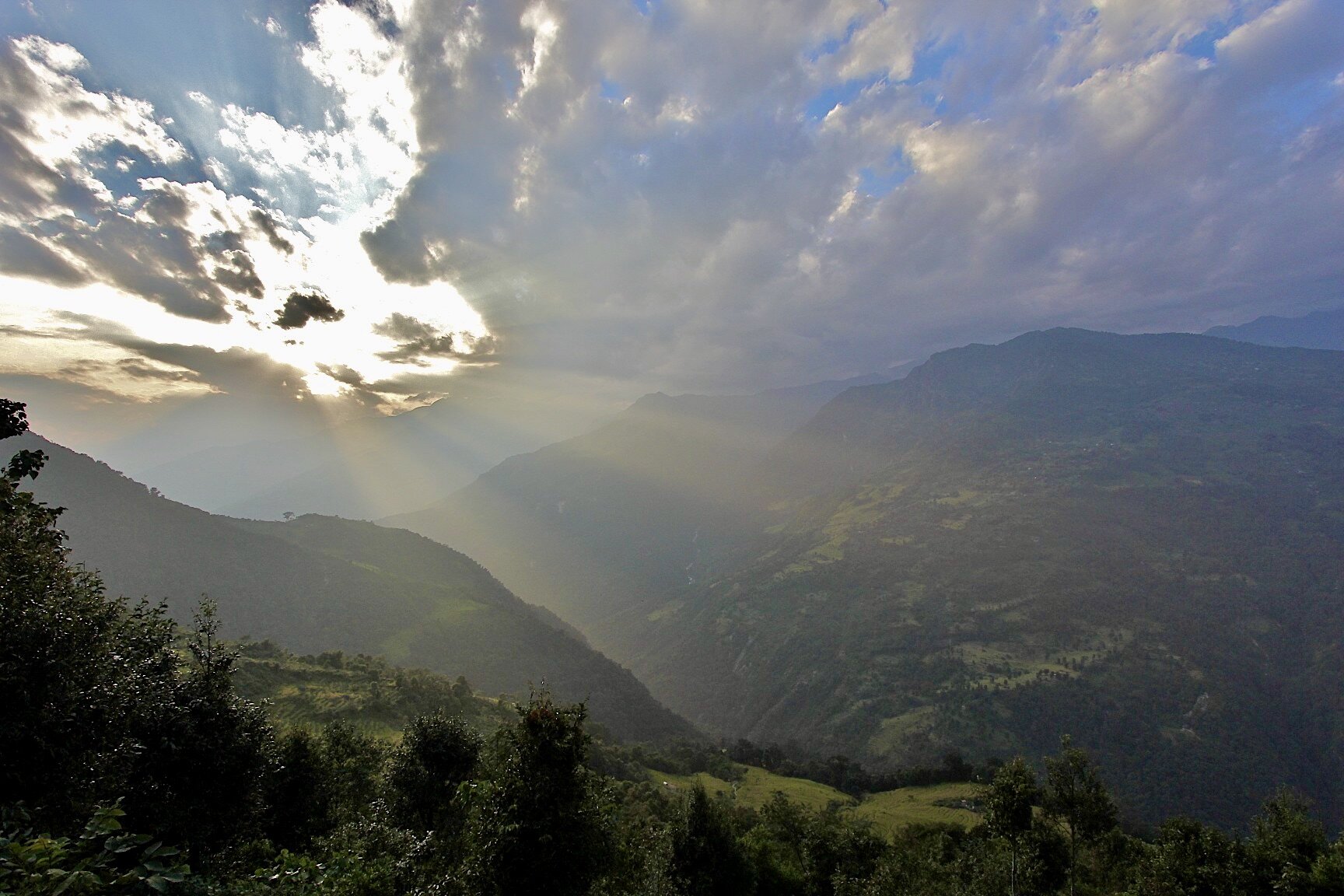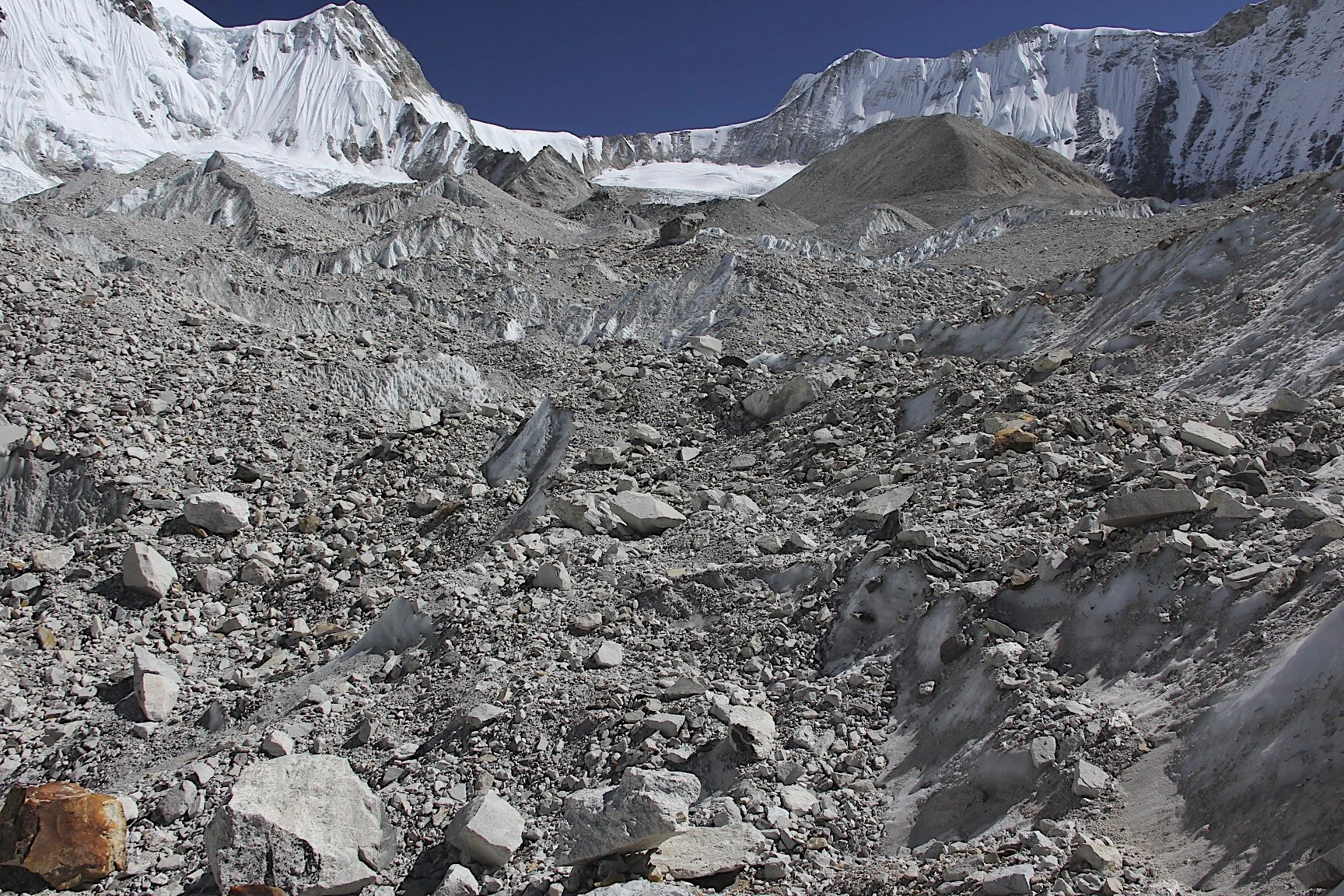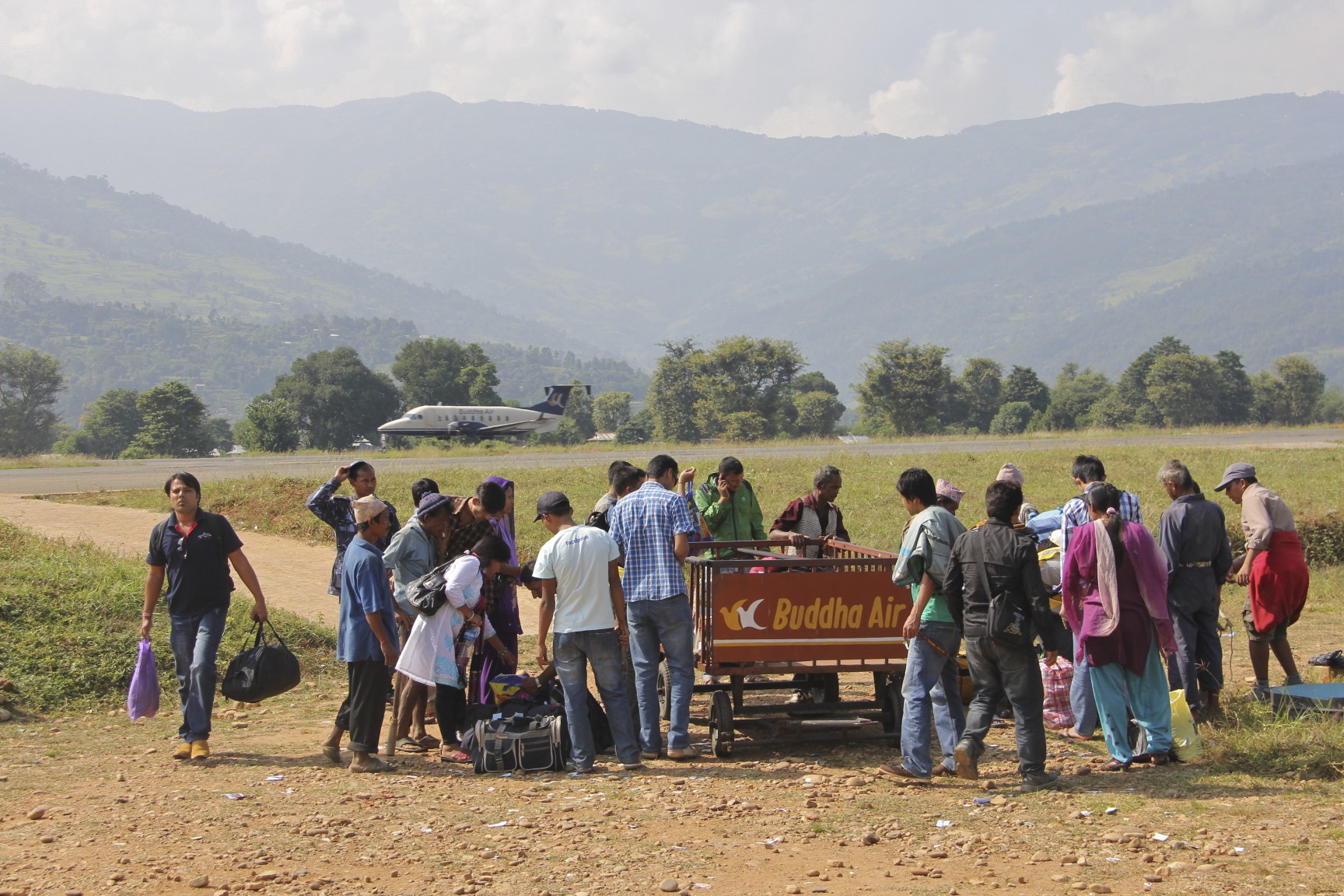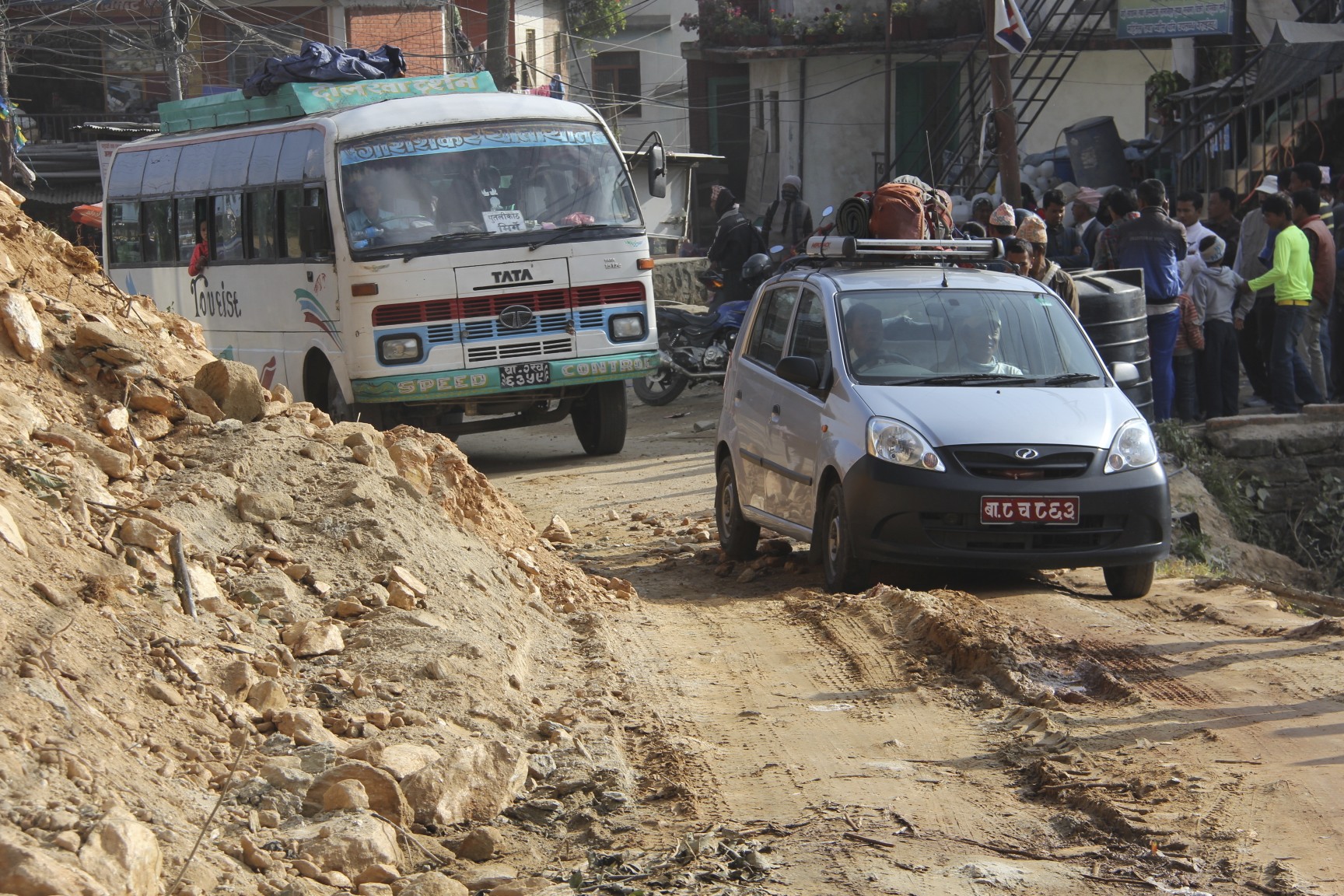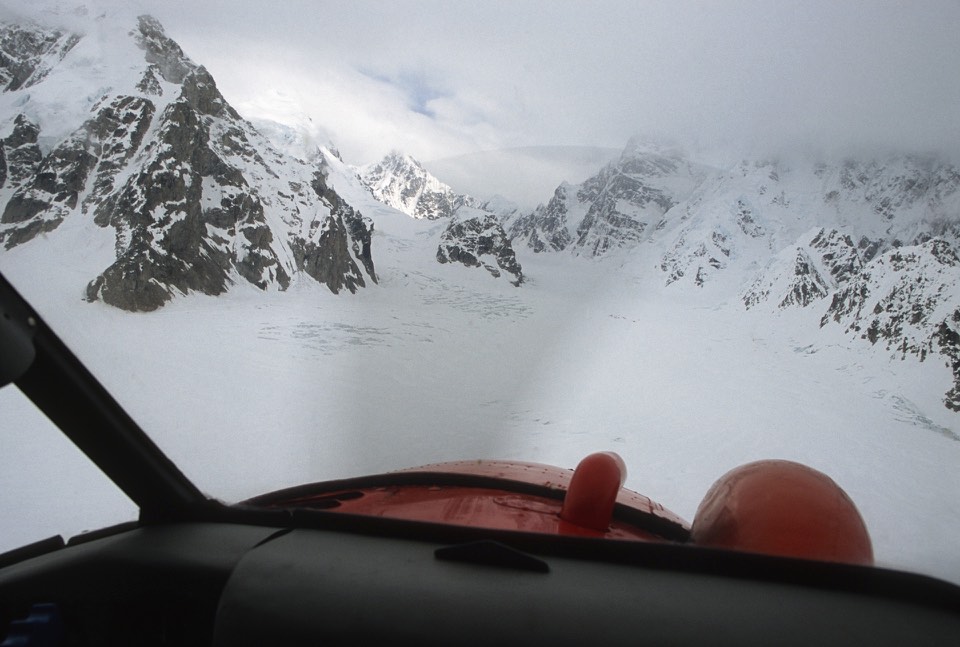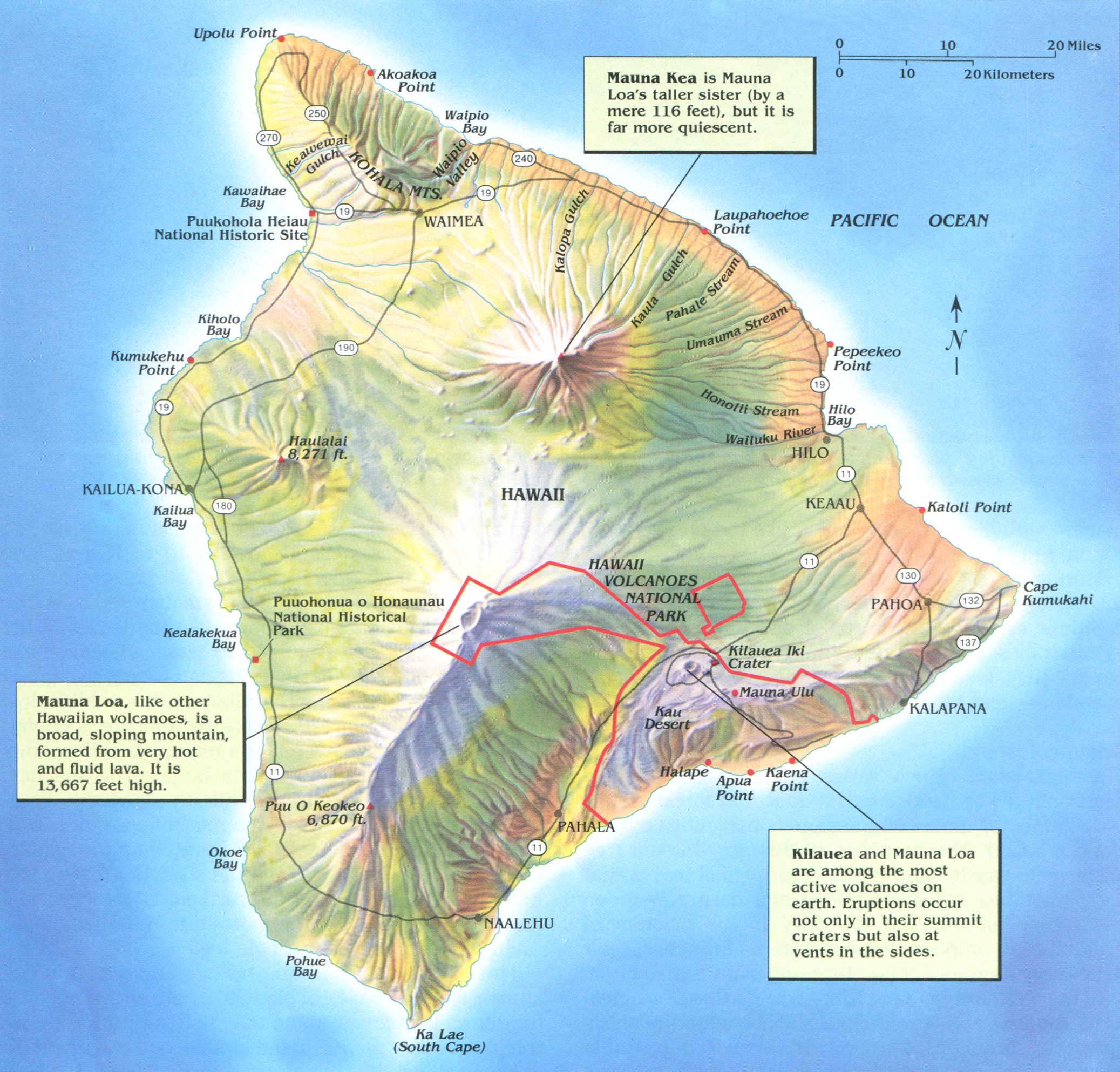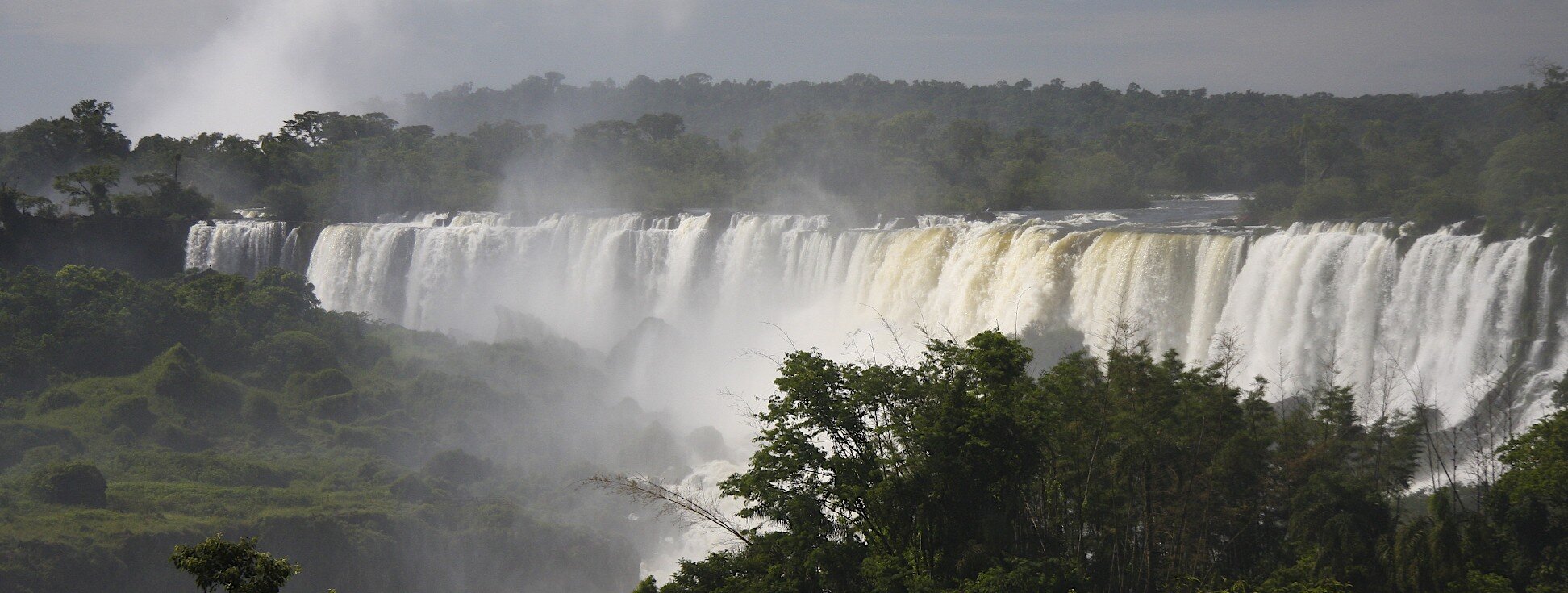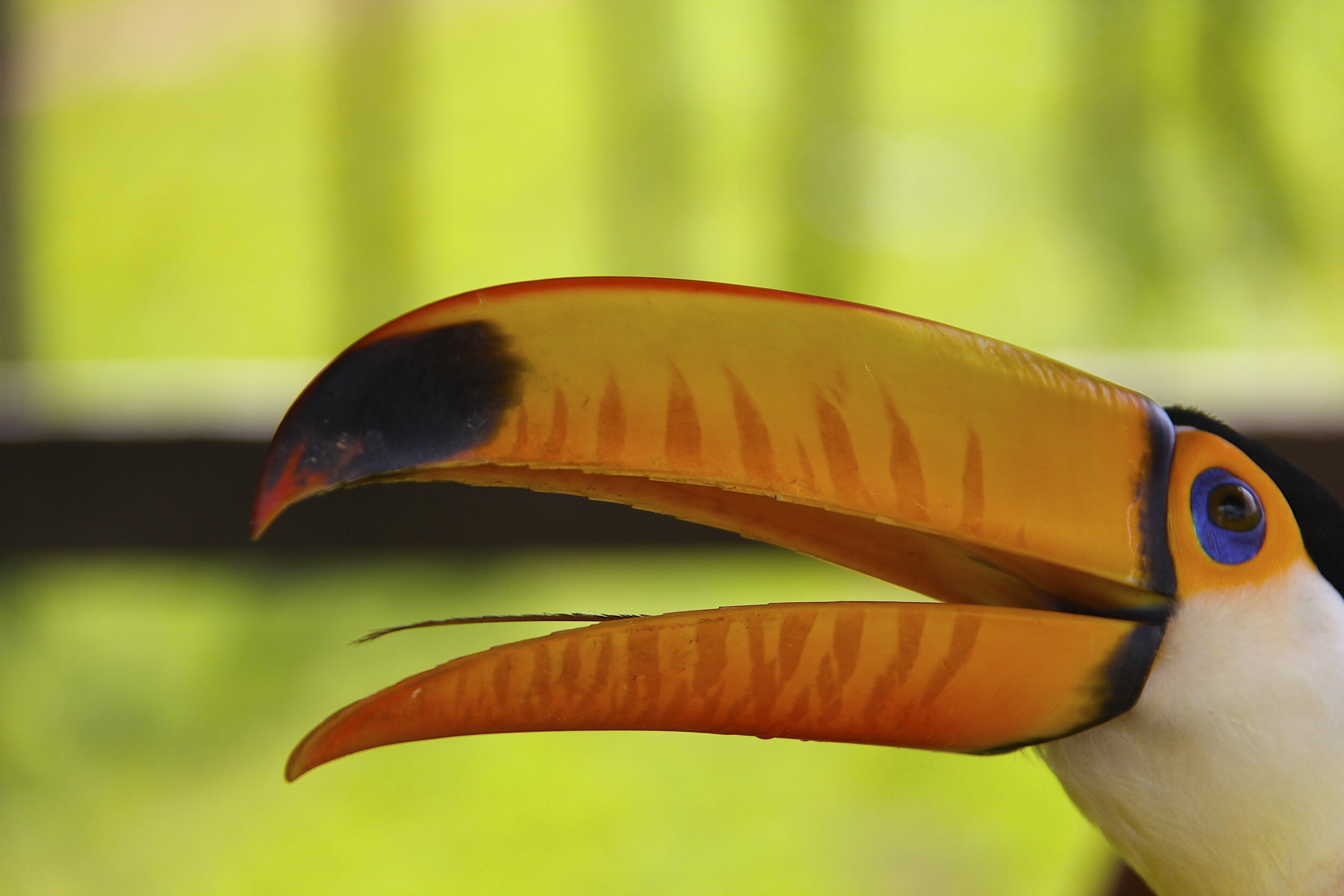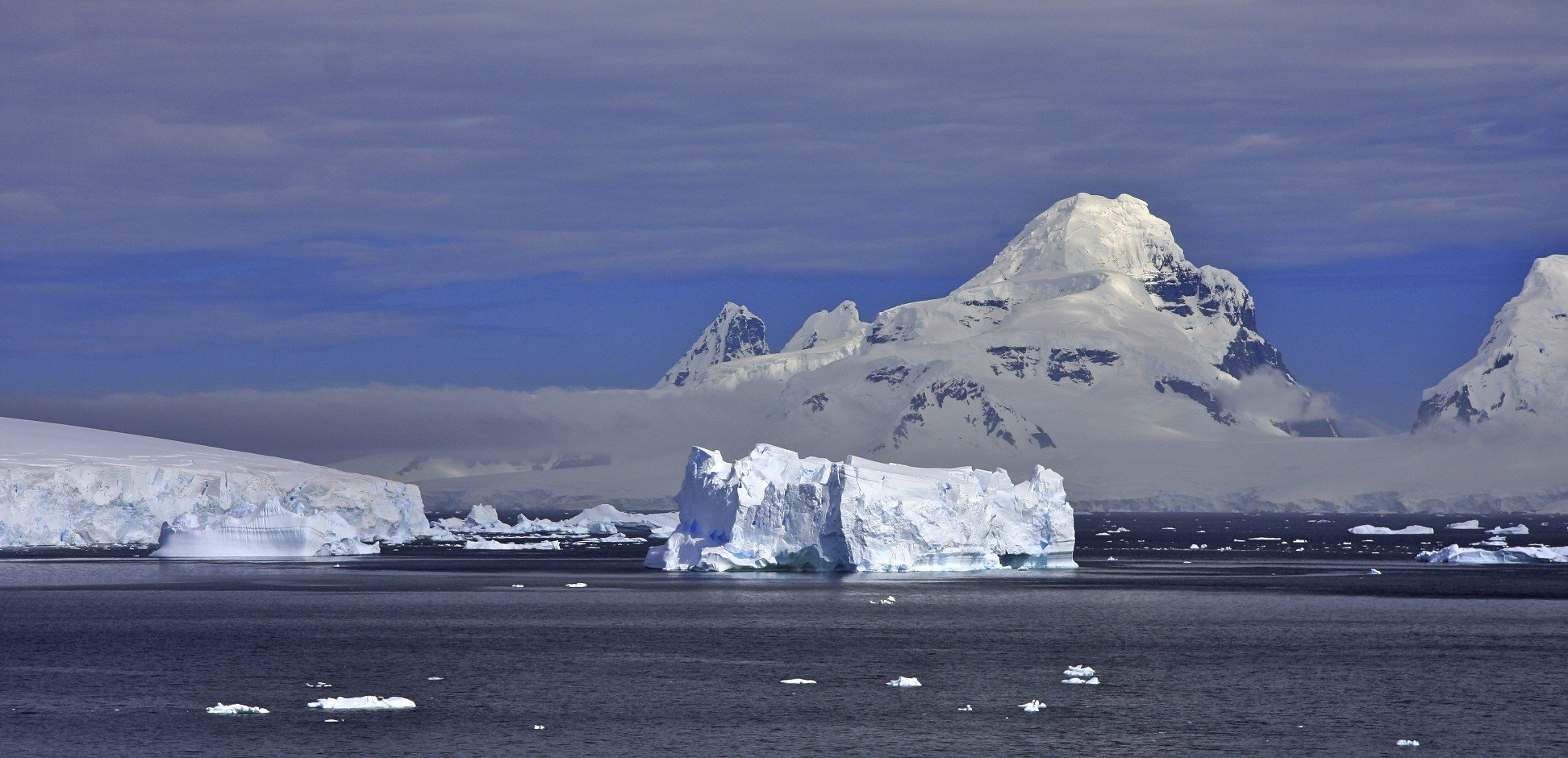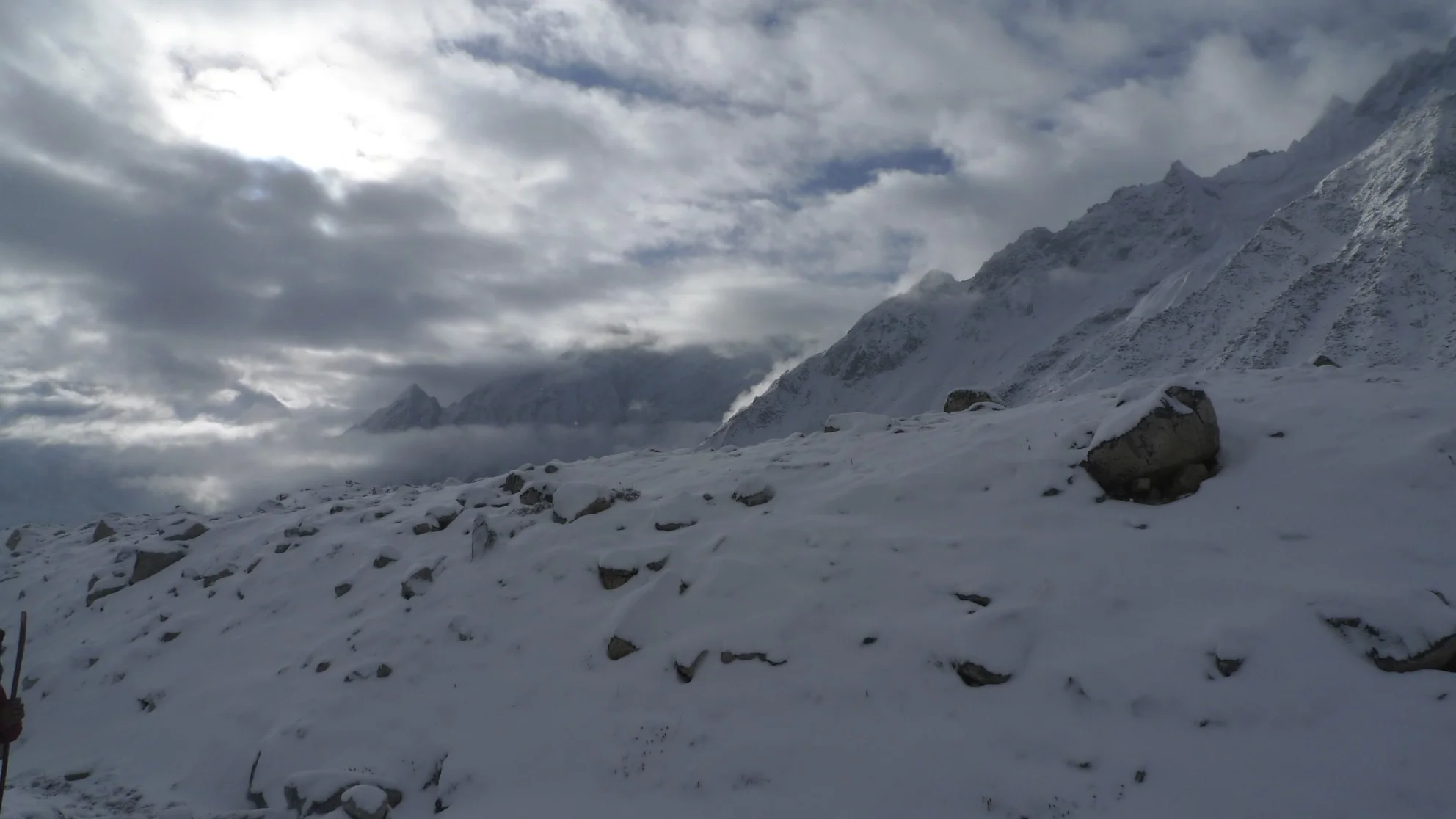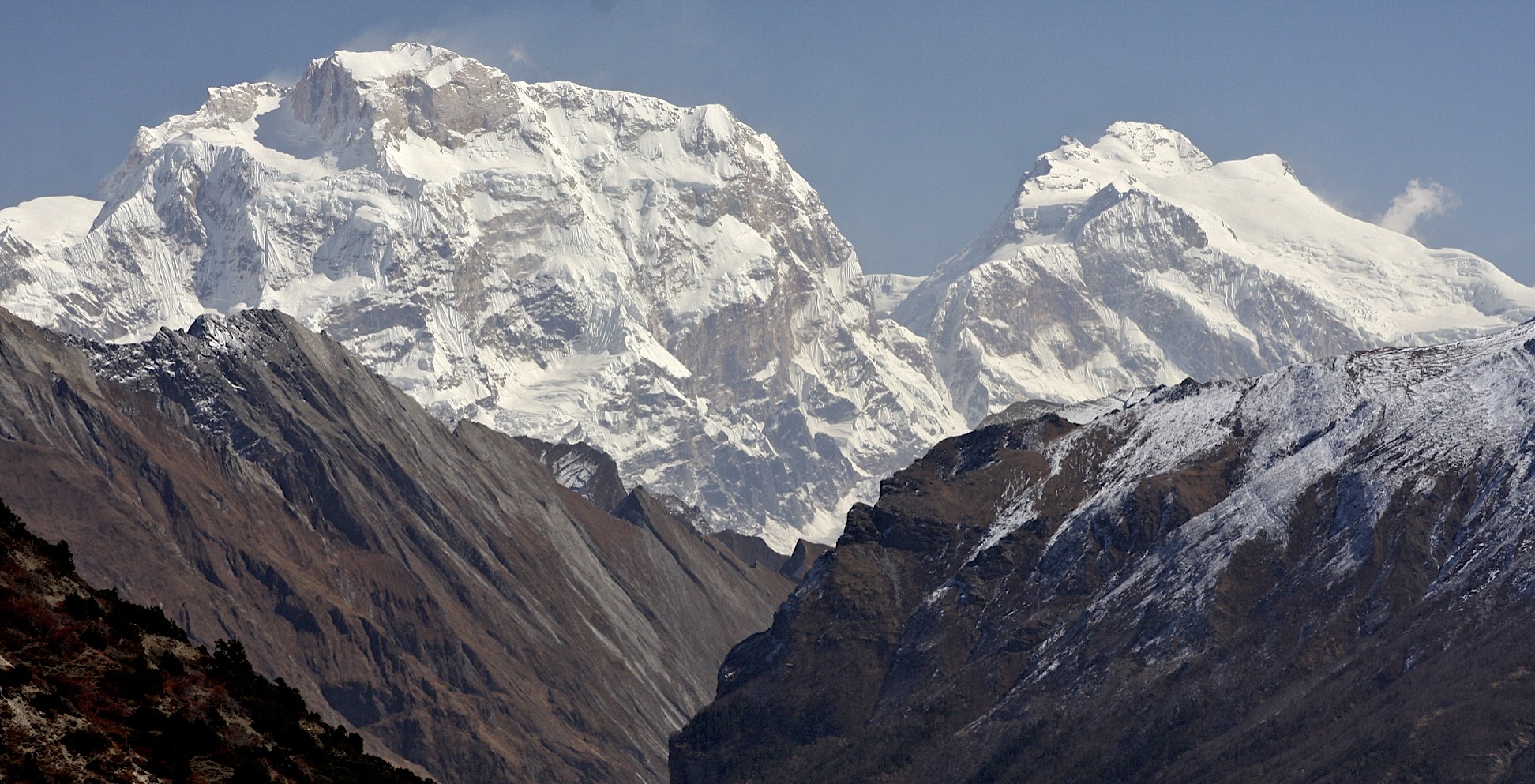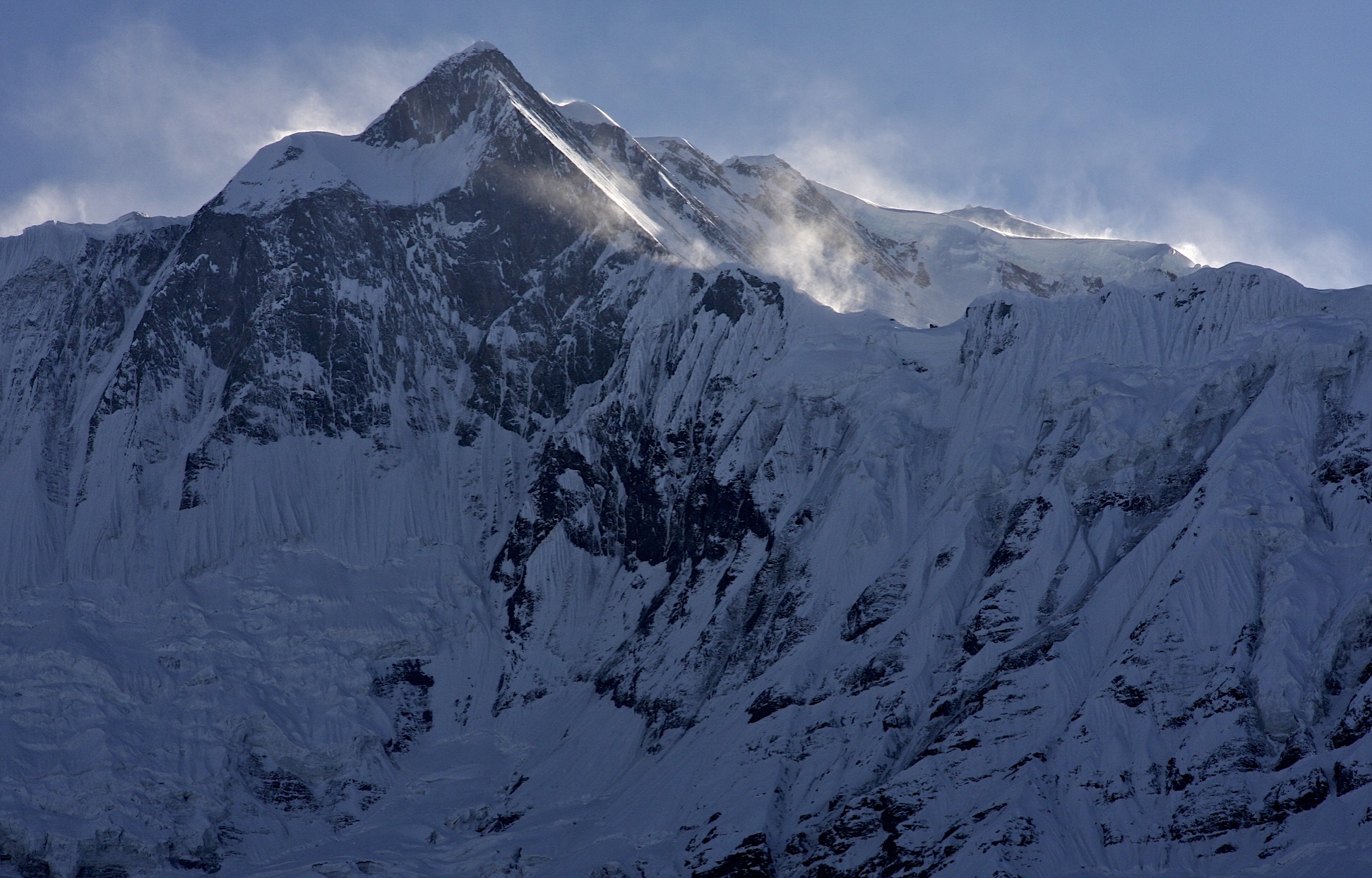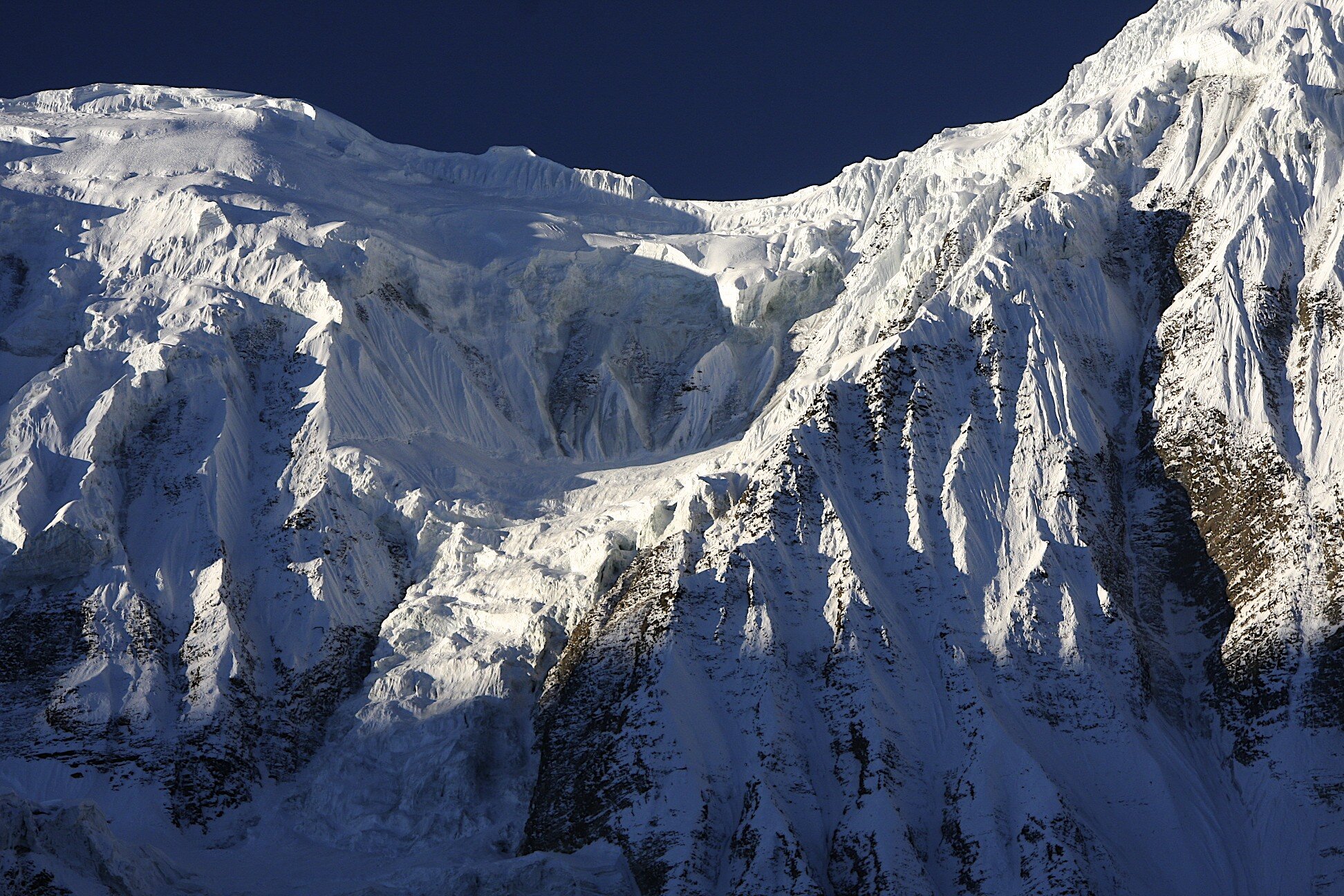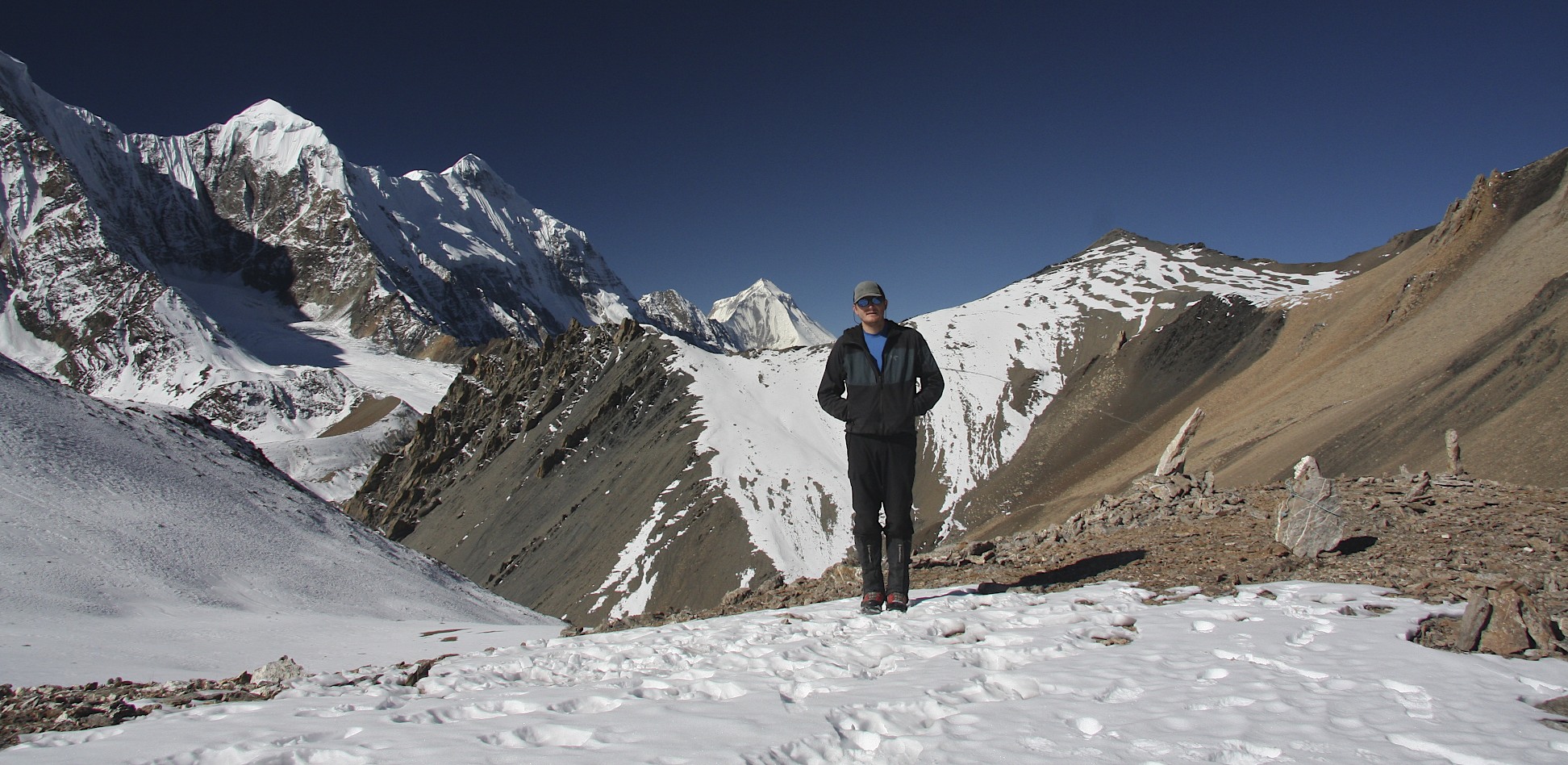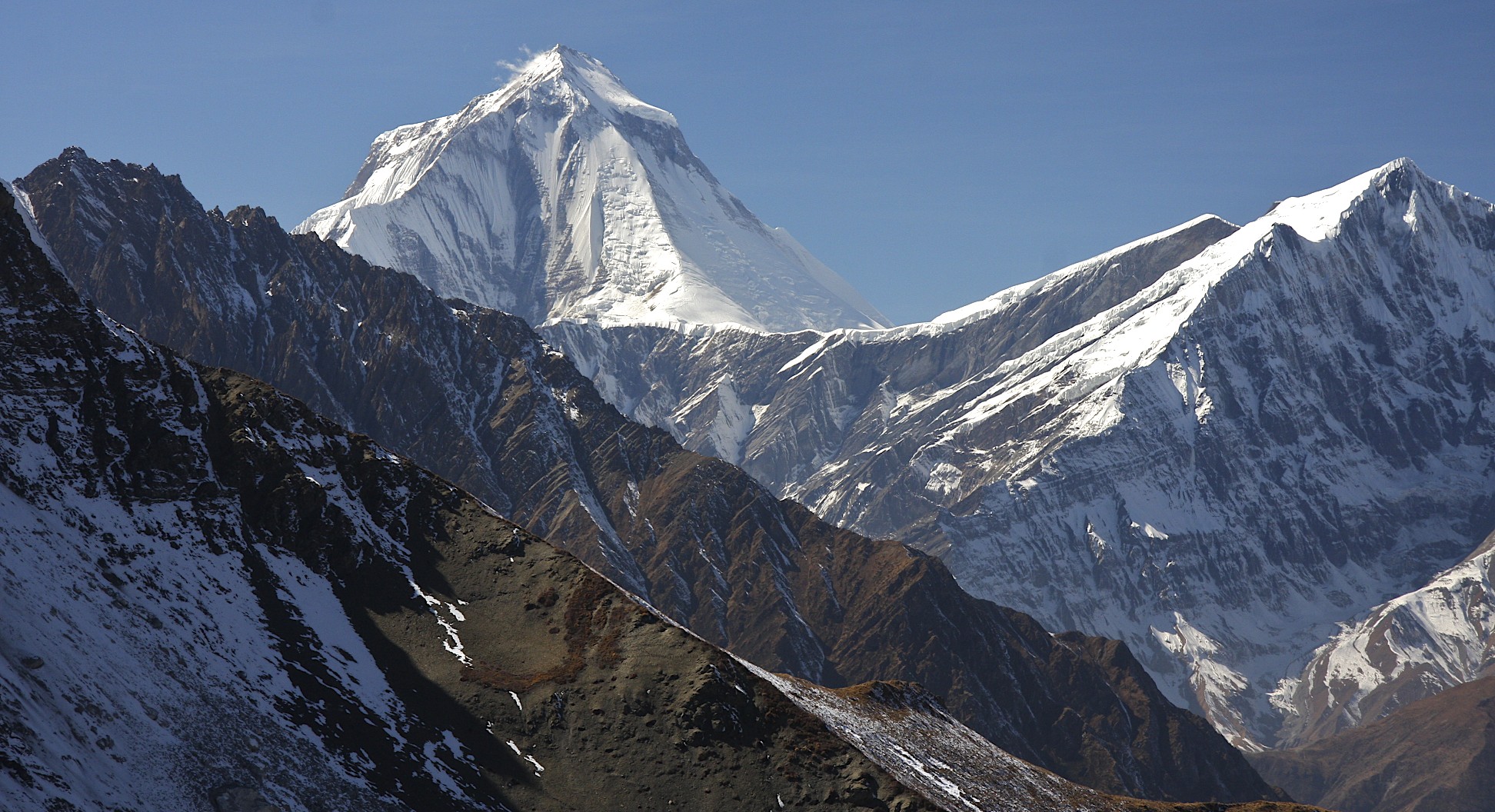We did manage to find a room though that we all shared. Manang is a crowded place geared up to service masses traversing the Annapurna Circuit trek. It is build up and soulless (at least the new part). Grey concrete hotels dominate the landscape.
We are moving on from there and leaving the main Annapurna Circuit trail to go to Jomsom over the Mesocanto La Pass. After walking on this trail, I would not come to Nepal to do the Annapurna Circuit. It is too crowded, very commercialized, devoid of local culture and lacks the high alpine experience. It is good to cross it off the list though.
The route to Mesocanto La follows the flat riverbed at first with good views back to the village of Manang where we spent the previous night. It also offers spectacular view of the north side of Gangapurna with its steep fluted snowy slopes. The route then crosses the hanging bridge and starts ascending towards the Tilicho Lake. The area is very dry. The riverbed is dry and arid. We are on the north side of the Himalaya range so the rainfall is much lower than on the south side, which is very lush and green. The 8,000m high Annapurna range blocks the annual monsoon rains with very little moisture making it into the northern slopes.
Along the way, we crossed very steep and gnarly scree slopes that drop off to the river 1,000m below. This section gave Kumar and the guys a scare, as they felt that the trail was loose and exposed. The scenery was outstanding and it improved the higher we got. The slope we walked on was punctuated by tall sandstone pinnacles and wired rock formations. It looked as the weather had finally improved and we left the rain and snow behind in the Manaslu region.
We arrived at the Tilicho Tal basecamp at 4,140m. The camp was very cold, as by the time we got there, the sun has already disappeared behind the mountains. In front of us, the Rock Noir (a prominent mountain in the Annapurna Range) rises to above 7,000m. We could make out the very top of Annapurna 1 at the end of a ridge extending from the Rock Noir. (I would have a good view of this mountain from a helicopter in 2017 while visiting the Annapurna Sanctuary - see the 2017 year).
The wall of ice and snow behind us was glowing brightly in the setting sun. We set up the camp, had a juniper fire and stomped around in the cold. When we run out of things to burn, it was time for a cold sleep in the tent at 6 pm. I was wandering, what to do for all the hours between sunset at 6pm and the true bedtime? This is the worst thing about camping at high altitudes among the peaks. It gets really cold after the sun sets and 6 pm is not the time to go to bed.
November 7, 2011 Tilicho Lake – Tilicho Tal Kharka 4,949m
The approach to the lake was very dramatic. The trail ascends diagonally along a bare slope with dramatic view all the way back to Manaslu Range. The peaks of the Annapurna Range came into view as we climbed higher. We could see Gangapurna, Annapurna 3 and Rock Noir - all the peaks of the Annapurna Range over 7,000m. As we walked up the trail towards the Tilicho lake, the Great Barrier appeared immediately in front of us. The dramatic icefalls and cliffs of the Great Barrier were so close that it seemed that they could be climbed in no time (of course it was very deceiving).
The Tilicho Lake is very beautiful. It is flanked by the wall of icy ridges of the Great Barrier on the south side. The area looks like Antarctica. The icefalls descend all the way to the green lake below with chunks of glacial ice breaking off into the lake. The place is cold and windy. We had brilliant blue sky which bode well for the crossing of the Mesocanto Pass. We stopped briefly for tea at the lonely teahouse by the lake. Most people who venture out here return to Manang (or teahouses below) the same day. It is not a busy area and definitely it is a big contrast to the crowded Annapurna Circuit and the Throng La Pass.
We found a nice campsite on the north side of the lake directly across the Great Barrier. The sun hid behind the peaks around 3.30 pm making the light for photos too dark. Once the sun was gone it got quite cold. The altitude is close to 5,000m here and the sky was clear which made the temperature fall even further. It got so cold after the sunset that Kumar and the crew did not sleep at all during the night. I usually take a Nalgene bottle filled with boiling hot water and put it in the sleeping bag. When it is really cold I take two. This was a two hot water bottle night. Unfortunately Kumar, Kamsing and Suri had two sleeping bags for the 3 of them. They tried to share it but it did not work so well.
Tomorrow is Mesocanto La crossing. I am anxious and eager to get this journey finished. It has been a long distance and it feels like a long time. In retrospect I have seen so much, a lot of varied landscapes, famous mountains and I added another 300 km to my Himalayan trekking resume and my goal to travel the Great Himalaya Trail in its entirety.
It is 6.30pm and I am in the sleeping bag already. It is dark and cold outside at 4,920m although it is a full moon night (the moon has not appeared yet from behind the Annapurna Range). What would I do at home at 6.30pm? Definitely not sleep. Kumar, Kamsing and Suri sleep together for warmth. They have two poorly insulated sleeping bags between the three of them and only two mats. They have no spare clothing; their boots are falling apart and have holes in them. Yet they never complain, not even once and they always smile.
November 8, 2011 Mesocanto Pass 5,350m
We got up early at 5.30 am because of the intense cold. It was still dark and clear as the sun did not rise until 6.30 am. The tent had a lot of frost inside from condensation. The peaks across the lake, illuminated by the full moon, looked eerie. The silver light of the moon projected on the white peaks was reflected in the still water of the lake like in a giant mirror.
After a cup of hot noodle soup we left the campsite for the pass that was a long way away. I was anxious about the pass due to its reputation as difficult, steep and technical. It is not a very well frequented area so there is no formal trail. It turns out that the Mesocanto Pass is actually a series of three passes connected by a high plateau. We started walking around 7 am and made it to the first pass at 5,350m around 9 am. The weather was clear and brilliant, probably the payback for many days of rain and snow we had on the Manaslu side. The rising sun illuminated the Great Barrier and the lake. Behind Rock Noir, the summit of Annapurna 1 was now visible. The scenery was beyond spectacular.
The walk from the first pass at 5,350m to the actual Mesocanto Pass is very long. The entire way is above 5,000 meters. We made it to the second pass at 5,100m with a great view of Tilicho Peak and Nigrili North. The bulk of Dhaulagiri also came into view. We were basically walking around the Tilicho Lake at above 5,000m and now had views to the peaks on the east side of the lake: Gangapurna, Annapurna 3 and Annapurna 2. We arrived at the third pass at 5,100m shortly thereafter. It would be terrible to encounter a snowstorm here. The exposed and high plateau between the passes would make the route finding quite tricky.
The mighty Mesocanto Pass was right there in front of me. The views from the pass to the lake and to Dhaulagiri and Kali Gandaki valley were spectacular. We had completely clear weather and no wind. We could see the mountain range across the valley with the Dhampus Peak and the Dhampus Pass on the horizon. The Mesocanto pass itself is marked with a very sharp (horn like) small rocky peak. It is clearly visible from a long way away, which makes it easy to pinpoint the location of the pass. I could see it from the Dhampus Pass in 2016 during the Dhaulagiri Trek.
The descent route looked very steep indeed. The pass lived up to its reputation. Now I did understand why this pass has such a fearsome reputation and is considered difficult. The descent route is basically a steep snow chute with steep rocks on both sides. The chute was full of snow and ice. One slip would send a person all the way down for a 300m ride to the rocks below. For a moment I considered going back to the Mesocanto North Pass, which was supposed to be easier.
Kumar and Kamsing did not seem too concerned and started going down. The descent was quite exposed with steep drop-offs all around. The rocks were thankfully clear of snow and ice and there was no wind. We descended very carefully without a rope. Suri slipped a few times as he has the least mountaineering experience between us. The lack of proper boots did not help either. Sometimes I feel that the Nepalese just wing it hoping for the best. In case of a serious weather, accident or altitude issues they could just perish like the porters the year before on Teshi Labtsa Pass.
We descended to the flatter ground and set up camp on a green Kharka (grass pasture) with a lot of yaks. The yaks would meander between tents all day and night. It was strange having a car sized cow with sharp horns snorting right next to me while lying inside the tent.
This is the final night on the trek. We are camping in front of the Kali Gandaki Valley with Dhaulagiri clearly dominating the view in front of us. When I asked Kumar if the Dhaulagiri trek would be worth the effort, he said that I already saw it so why bother? Dhaulagiri looked large and prominent from our camp. We had a spectacular sunset and a sunrise on it.
It is only 5 hours walking time to Jomsom from here. I am happy to have done the Mesocanto La variant instead of the Kang La Pass and Naar and Phu villages. This pass was a true mountain experience with camping and it took us away from the Annapurna circus. The day number 18 of walking is tomorrow and it feels like it has been a long way from Arugat (although it is only 18 days!). Looking at Dhaulagiri it looks so alone and high dominating the sky like the king of mountains. I was thinking of Piotr Morawski and his tragic story of his death that played out in the public eye. It is a lonely place to die. I would see his memorial on the French Pass in 2017.
November 9, 2011 Jomsom 2,743m
The walk down was tiring even though it was only 3-4 hours long. We walked for almost 300 km (or more, as it is hard to measure distances here. Kumar thinks it was 300 km) in 18 days. We climbed 12,585m and descended 11,800m along all the ups and downs of the trail. This was the longest trek that I have done in Nepal.
Dhaulagiri and its ice falls dominated the view like the king of mountains all the way to Jomsom. Jomsom is a typical Nepali dumpy and dry truck stop with hotels such as Dancing Yak or The Meaning of OM. It has some shops selling Tibetan trinkets and Marfa apple brandy. The natural setting of the village is very spectacular with the Annapurna range on one side and Dhaulagiri range on the other. I am sure that being the gateway to Mustang, there are a lot of interesting things to see around here (such as the village of Marfa with its large gompa). It will have to wait for another day though as I am too tired of walking and of taking photos.
The trip has come to the end not only time-wise but also in terms of my energy and ability to absorb more stimulation. I have enjoyed this tip a lot despite my feelings of indifference very early on and disappointment with the weather in the Manaslu region.
At the start of this trek, I was curious whether by being alone, I would have some revelations, insights or deep thoughts. I have not however, realized any great insights in terms of thoughts or profound revelations. The change and impact have been more sublime. At the end, I did feel very at ease, relaxed without any anxieties or anger. The experience has heightened my sensitivity to the beauty of nature, the kindness of the people and my good fortune for being here. The nature has cleared me (although temporarily) from my attachments to some of the artificial aspects of life back home. It was like hitting a reset button on a computer, a spiritual cleanse. It killed the proverbial rat that has to be fed constantly back home. I felt more laid back and able to surrender to whatever was coming my way. The rat was dead (or asleep). It felt like I was stripped down to the basic components that resonate with nature around me. The layers of my armor, needed for the life in the artificial world back home, have been stripped away exposing the socket through which the connection with something greater could be made. I think that this feeling was heightened because I was alone, I had time to quiet my internal monologue and just listen to the silence around me. I surrendered to the process of walking and to my companions. Subconsciously, I surrendered to this process without even realizing it.
I am ready to go home but feel no anxiety about the things waiting for me there. I enjoyed traveling alone and at the end I did not miss the company of other westerners. Deep inside I know that it was a good decision to come here and walk all this way. It was a great opportunity to level myself and experience a separation from my usual travel companions. In retrospect the feelings of anxiety and attachment to the things back home dissolved over the last 18 days. It is amazing how much 18 days can change in one’s perspective. I also learned a lot about the Nepalese through my discussions with Kumar. I had an opportunity to observe and just listen.
I mailed the postcard of Mt. Manaslu with Mt. Manaslu stamp from Jomsom. I am happy to have walked so far and to have crossed two high passes (including a difficult one) in such a short time.
These trips allow me to gain some distance from the things back home. They allow me to look at things from a different perspective. Perhaps this perspective increases my ability for appreciating what I have? Back home, being in the middle of it all, it is hard to gain distance and focus on what is truly important. It is difficult to see the irrelevant and superficial for what they are. I enjoy the simple life on the trail with no expectations just taking each moment as it comes. I give up the control of the process and do not expect the outcome to go my way. I think that I learned from my Nepalese companions that there could be another way of looking at life, at the future and our influence over the flow of events around us. Perhaps the liberation that came from giving up my desire to control everything around me, was the most valuable revelation I had on this trip and on other trips in the Nepal Himalaya.
Since these experiences are reinforced by each consecutive trip, this feeling becomes more permanent and is not as fleeting as if I had this experience only once.
I felt good, happy and ready for another cup of lemon tea.






